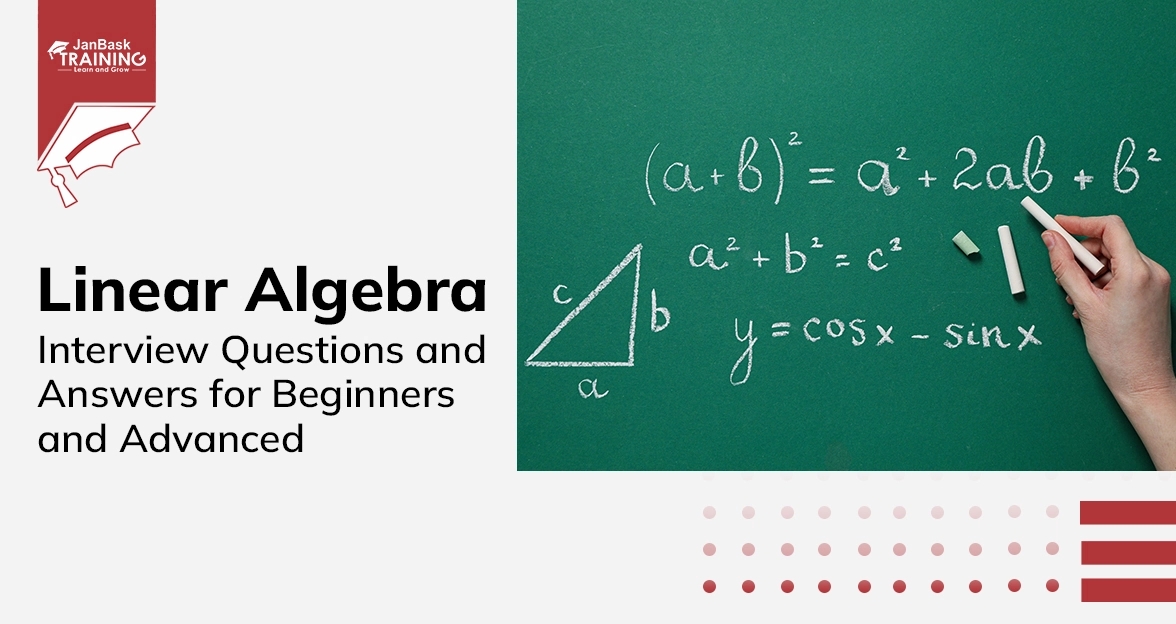 Grab Deal : Upto 30% off on live classes + 2 free self-paced courses - SCHEDULE CALL
Grab Deal : Upto 30% off on live classes + 2 free self-paced courses - SCHEDULE CALL

 Grab Deal : Upto 30% off on live classes + 2 free self-paced courses - SCHEDULE CALL
Grab Deal : Upto 30% off on live classes + 2 free self-paced courses - SCHEDULE CALL

Statistics is considered an important branch of mathematics. It is primarily centered around the collection, analysis, interpretation, and presentation of various numerical facts. It is used in almost all research fields and forms the basis of data science. Statistics help in a better understanding of the data. It is helpful both in data collection, summarization, analysis, and even interpretation of variable numerical data.
Thus, the field offers immense scope in many sectors like sports, psychology, marketing, education, etc. where one can get work as a statistics administrator, financial analyst, etc. This blog is curated to help you with all the potential Statistics Interview Questions.
Let’s get started, shall we? Below is the list of all the essential statistics interview questions and answers.

Here is a comprehensive list of basic statistics questions and answers that you can prepare for your interview in the same field.
Ans:- Statistics have two main branches, namely:
Ans:- Statistics are usually used in many different kinds of research fields. The lists of files in which statistics are used are :
It is also used in the following areas:
Data Science Training - Using R and Python
Data Science Training - Using R and Python

Ans:- Data Science is a science that is led by data. It includes the interdisciplinary fields of scientific methods, algorithms, and even the process for extracting insights from the data. The data can be either structured or unstructured. There are many similarities between data science and data mining as both useful abstract information from the data. Now, data science also includes mathematical statistics and computer science and its applications. It is by the combination of statistics, visualization, and applied mathematics and computer science that data science can convert a vast amount of data into insights and knowledge. Thus, statistics from the main part of data science it is a branch of mathematical commerce with the collection, analysis, interpretation, organization, and presentation of data.
Ans:- Both correlation and covariance are basically two concepts of mathematics that are widely used in statistics. They not only help in establishing the relations between two random variables but also help in measuring the dependency between the two. Although the work between these two mathematical terms is similar, they are quite different from each other.
Ans:- Bayesian rests on the data which is observed in reality and further considers the probability distribution on the hypothesis.
Ans:- Frequentists rest on the hypothesis of choice and further consider the probability distribution on the data, whether it is observed or not.
Ans:- The probability of some of the observed outcomes under specific parameter values is regarded as the likelihood of the set of parameter values under certain observed outcomes.
Ans:- In terms of statistical significance testing, the p-value represents the probability of obtaining a test value, which is as extreme as the one which had been observed originally. The underlying condition is that the null hypothesis is true.
Ans:- Let us suppose the experimental results showing the coin turning heads 14 in 20 flips in total. Here is what is derived:
(? 14 heads or ? 14 tails) = 0.115We can see above that the p-value overshoots the value of 0.05, so the observation is in line with the null hypothesis-that means the observed result of 14 heads in 20 flips can be related to the chance alone- as it comes within the range of what would happen 95% of the time is this was a real case. In the example, we failed to reject the null hypothesis at the level of 5 %. The coin did not have an even fall and the shift from the expected outcome is slight to be reported as “not statistically significant at 5% level).
Read: What Exactly Does a Data Scientist Do?
Some more probability and statistics interview questions and answers.
Ans:- Sampling is considered as part of the statistical practice which is concerned with the selection of an unbiased or random subset of single observations in a population of individuals which are directed to yield some knowledge about the population of concern.
Ans:- Sampling can be done in 4 broad methods:
Ans:- The mode is defined as that element of the data sample, which appears most often in the collection.
X= [ 1 5 5 6 3 2]
Mode (x) % return 5, happen most.
Ans:- Median is often described as that numerical value that separates the higher half of the sample, which can be either a group or a population or even a probability distribution from the lower half. The median can usually be found by a limited list of numbers when all the observations are arranged from the lowest to the highest value and picking the middle one.
Ans:- Here is the list of those four main things, one should know before studying data analysis:
Ans:- Center, spread, shape, and outlier are the most common characteristics used in descriptive statistics.
Ans:- It represents how far are the data points from the mean
(σ) = √(∑(x-µ)2 / n)
Variance is the square of standard deviation
Ans:- An outlier is an abnormal value (This is at an abnormal distance from the rest of the data points).
Here is the 5-number summary that can be used to identify the outlier:
Widely used – Any data point that lies outside the 1.5 * IQR
Lower bound = Q1 - (1.5* IQR)
Upper bound = Q3 + (1.5 * IQR)
Ans:- A permutation of n elements is any arrangement of those n elements in a definite order. There are n factorial ways to manage n elements. The total number of permutations of n things taken r-at-a-time is defined as the number of r-tuples that can be taken from different elements.
Combinations refer to the number of ways to choose r out of n objects where order does not matter a lot. The total number of combinations of n things taken r-at-a-time is defined as the number of subsets with r elements of a set with n elements.
Ans:- The Pareto principle is also known as the 80/20 rule. It states that 80% of the effects come from 20% of the causes. For example, 80% of sales is the output of 20% of customers.
Ans:- To determine the statistical significance, you need to perform hypothesis testing. The first step of the process begins with stating the null hypothesis and alternative hypothesis. In the second step, you need to calculate the p-value, the probability of obtaining the observed outputs of a test assuming that the null hypothesis is true. In the last step, you will need to set the level of the significance and if the p-value is less than the alpha, you will reject the null.

In case you are experienced, then have a look at the probability and statistics interview questions and answers for professionals here:
Ans:- Skewness is described as data asymmetry, which is centered around a mean. If skewness is negative, the data is spread more on the left of the mean to the right. If skewness is seen as positive, then the data is moving more to the right.
Data Science Training - Using R and Python
Ans:- Covariance is a measure of how two variables move in sync with each other.
y 2= [1 3 4 5 6 7 8]
cov ( x,y2) % return 2*2 matrix, diagonal represents variance.
Ans:- T-test refers to any statistical hypothesis test in which the statistic of the test follows a Student’s t distribution if the null hypothesis is supported.
[h, p, ci] = test (y2,0)% return 1 0.0018ci = 2.6280 7.0863
Ans:- The Alternative-hypothesis, which is represented by H1 is the statement that holds true if the null hypothesis is false.
Read: The Battle Between R and Python
Ans:-The probability of rejection of the null hypothesis when it is known as the significance level a, and very common choices are ?=0.05 and ?=0.01.
Ans:- Let us suppose that the population of the men has normally distributed weights, with a mean of 173lb and a standard deviation of 30 lb and one has to find the probability
The solution will be:
z= (x-µ)/?= (180-173)/30=0.23 For normal distribution P(Z>0.23)= 0.4090 ? x?= ?/?n=20/?36=5 z=(180-17)/5=1.40 P(Z>1.4) =0.0808
Ans:- In any binary search, the array has to be arranged either in ascending or descending order. In every step, the search key value is compared with the key value of the middle element of the array by the algorithm. If both the keys match, a matching element is discovered, and the index or the position is returned. Else, if the search key falls below the key of the middle element, then the algorithm will repeat the action on the sub-array which falls to the left of the middle element of the array if the search key is more than the sub-array to the right.
Read: Data Science and Software Engineering - What you should know?
Ans:- A hash table refers to a data structure that is used for implementation in an associative way in a structure that can map keys to values. A hash table makes use of a hash function for computing an index into an array of buckets or slots from which the correct value can be obtained.
Ans:- In the wide format, the repeated responses of the subject will fall in a single row, and each response will go in a separate column. In the long format, every row makes a one-time point per subject. The data in the wide-format can be recognized by the fact that the columns are basically represented by the groups.
Ans:- Data is usually distributed in many ways which incline to left or right. There are high chances that data is focussed around a middle value without any particular inclination to the left or the right. It further reaches the normal distribution and forms a bell-shaped curve.
The normal distribution has the following properties:
Ans: -A/B testing refers to a statistical hypothesis with two variables A and B. The primary goal of A/B testing is the identification of any changes to the web page for maximizing or increasing the outcome of interest. A/B testing is a fantastic method for finding the most suitable online promotional and marketing strategies for the business. It is basically used for testing everything from website copy to even the emails made for sales and also search ads.
Ans:- The statistical power of sensitivity refers to the validation of the accuracy of a classifier, which can be Logistic, SVM, Random Forest, etc. Sensitivity is basically Predicted True Events/Total Events. True events are the ones that are true and also predicted as true by the model.
Ans:- Central limit theorem is quite powerful and states that the distribution of the sample means almost a normal distribution.
For example, you take a sample from a data set and calculate the mean of that sample. Once repeated multiple times, you would plot all your means and their frequencies onto a graph and see that a bell curve, also known as a normal distribution. The mean of this distribution will closely resemble that of the original data.
The significance of the central limit theorem is quite high because it is used in hypothesis testing and also to calculate confidence intervals.
Q34). Statistics Interview Question: What general conditions must be satisfied for the central limit theorem to hold?
Ans:- The data should be sampled randomly.
The sample values must be independent of each other.
The sample size should be sufficiently large, generally, it needs to be greater or equal than 30
Ans:- The easiest way to describe a p-value to a non-technical person is to convenience through an example. In practice, if the p-value is less than the alpha, say of 0.05, then there is a probability of less than 5% that the result could have happened by chance. In the same way, a p-value of 0.05 is the same as saying 5% of the time.
Don’t forget to check Tutorials on Data Science!
Ans:- The major difference between observational and experimental data. Observational data comes from observational studies when you actually observe certain variables and try to determine I there is any correlation.
The resource of experimental data is experimental studies when you try to control some variables and hold them to figure out if there is any casualty.
Ans:- Here, we mean to say that
If the p-value is greater than the critical value, then we failed to reject the H0.
But if the p-value is lower than the critical value,e then we need to reject them.
Ans:- It is the phenomenon of choosing individuals, groups of people, or data for analysis in a way that proper randomization could not be achieved, ultimately creating a sample that is not presenting the population.
It is important to understand selection bias because it can effectively skew results and come up with false insights about a particular population group.
Also, Read - https://www.janbasktraining.com/blog/data-science-tutorial/
Ans:- It is a quality control method to produce an error or defect-free data set. Standard deviation is also known as Sigma. The more the standard deviation, the less likely that process performs with the right accuracy. Here, a six sigma model works great, and it is reliable enough to produce defect-free work.
Ans:- Here is the Binomial Distribution Formula:
b(x; n, P) = nCx * Px * (1 – P)n – x
Looking to make your career in data science? But confused about how to process. Here is complete guidance on Data Science Career Path.
Data Science Training - Using R and Python

Preparing for an interview is not a cakewalk–it needs a lot of preparation to crack a data science interview. No matter how much work experience you hold or what data science certificate you have, you can be thrown off from an interview, if you fail to answer the set of questions asked during the discussion.
These Statistics Interview Question and Answer cover from the basic ground of Statistics to the advanced level, making it easier for the students and professionals to get a comprehensive overview of the topic.
That’s it for now! Hopefully, you found this useful in refreshing your statistics knowledge.
Enrol yourself in a Data Science course to get practical training on data science from fundamental to advance level.
There’s a lot to remember, but the more often you practice Statistics Interview Question and Answer, the less likely you’ll lose it.
All the best!!


Data Warehouse Interview Question And Answers in 2024

R Programming Language Interview Questions & Answers

Cyber Security

QA

Salesforce

Business Analyst

MS SQL Server

Data Science

DevOps

Hadoop

Python

Artificial Intelligence

Machine Learning

Tableau
Download Syllabus
Get Complete Course Syllabus
Enroll For Demo Class
It will take less than a minute
Tutorials
Interviews
You must be logged in to post a comment